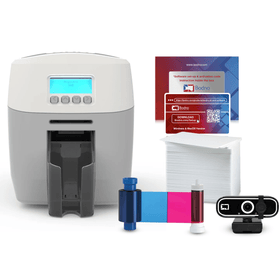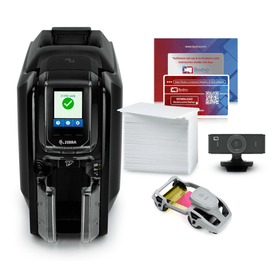With so many different types of ID cards to choose from, deciding on the ID card that best suits your access control and badging needs can be a difficult task. Here we will share the details of the different types of ID cards available and their features and functionalities so that you can decide on the ID card that meets the specific requirements of your business. Without further ado, let us see what the different types of ID cards are.
Proximity Cards
These are credit-card-sized cards with an antenna and electronic chip inside. The combination of chip and antenna is used to interact with an access control system to offer or restrict entrance to a particular area. These cards are available in various formats and you will have to choose the proximity card format that the access control system you use is configured for. These cards do not need any contact with the proximity card reader and so, they have a longer lifespan.
PVC Cards
These are blank cards without any integrated technology like electronic chips or antennas and can be printed on using common ID card printers like Magicard printers. PVC cards are the most common types of cards used to make photo ID cards. These are the best types of cards for visual identification, where proximity access control is not an issue. The most commonly used PVC cards are the standard credit card-sized ones, also called CR80. These cards are also available in CR 79 and CR 100 sizes. PVC cards are mainly used for student ID cards, membership cards, medical ID cards, etc.
Magnetic Stripe Cards
These cards are mainly used by businesses with an entry system requiring the cards to be swiped for employee identification or marking attendance. Magnetic stripe technology can be added to other types of cards to store information. These cards are usually available in two types, high coercivity cards, and low coercivity cards. High coercivity cards are also called HiCo cards and are the most commonly used types of magstripe cards. Low coercivity or LoCo cards are used for short-term data storage and are less frequently used than HiCo cards.
Smart Cards
These are technology cards with an embedded chip with a microprocessor and accessible memory. These cards are mainly used for applications where a value associated with the cardholder needs to be kept track of. Smart cards are available in two variations, contactless cards, and contact cards. These cards are commonly used for vending, loyalty programs, network security, electronic cash, and transit cards.

















